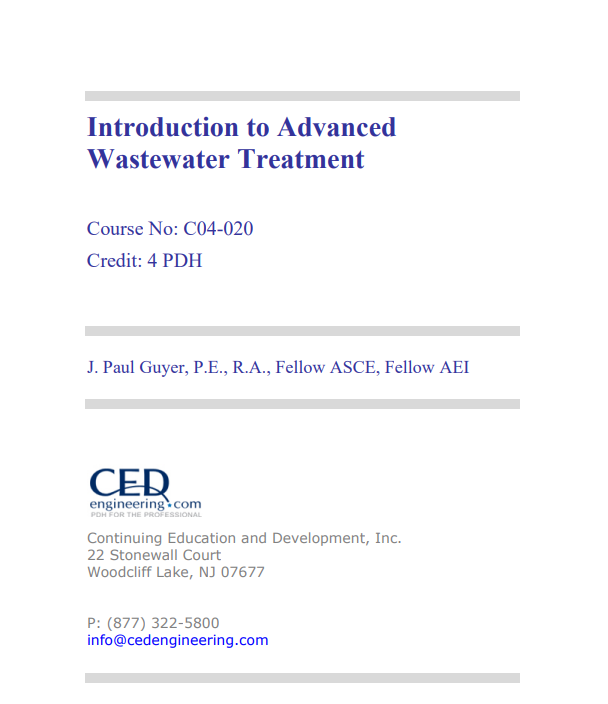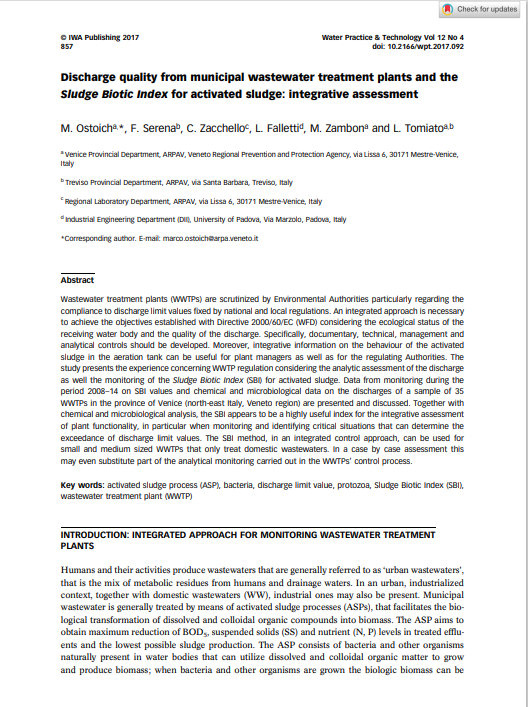An Overview of Nanomaterials for Water and Wastewater
Introduction
Generally speaking, nanomaterials describe materials of which the structural components are sized (in at least one dimension) between 1 and 100 nm [1]. Due to the nanoscale size of nanomaterials, their properties, such as mechanical, electrical, optical, and magnetic properties, are significantly different from conventional materials. A wide range of nanomaterials have the characteristics of catalysis, adsorption, and high reactivity. In the past decades, nanomaterials have been under active research and development and have been successfully applied in many fields, such as catalysis [2], medicine [3], sensing [4], and biology [5]. In particular, the application of nanomaterials in water and wastewater treatment has drawn wide attention. Due to their small sizes and thus large specific surface areas, nanomaterials have strong adsorption capacities and reactivity. What is more, the mobility of nanomaterials in solution is high [6]. Heavy metals [7], organic
pollutants [8], inorganic anions [9], and bacteria [10] have been reported to be successfully removed by various kinds of nanomaterials. On the basis of numerous studies, nanomaterials show great promise for applications in water and wastewater treatment. At present, the most extensively studied nanomaterials for water and wastewater treatment mainly include zero-valent metal nanoparticles, metal oxides nanoparticles, carbon nanotubes (CNTs), and nanocomposite
An Overview of Nanomaterials for Water and Wastewater
Introduction
Generally speaking, nanomaterials describe materials of which the structural components are sized (in at least one dimension) between 1 and 100 nm [1]. Due to the nanoscale size of nanomaterials, their properties, such as mechanical, electrical, optical, and magnetic properties, are significantly different from conventional materials. A wide range of nanomaterials have the characteristics of catalysis, adsorption, and high reactivity. In the past decades, nanomaterials have been under active research and development and have been successfully applied in many fields, such as catalysis [2], medicine [3], sensing [4], and biology [5]. In particular, the application of nanomaterials in water and wastewater treatment has drawn wide attention. Due to their small sizes and thus large specific surface areas, nanomaterials have strong adsorption capacities and reactivity. What is more, the mobility of nanomaterials in solution is high [6]. Heavy metals [7], organic
pollutants [8], inorganic anions [9], and bacteria [10] have been reported to be successfully removed by various kinds of nanomaterials. On the basis of numerous studies, nanomaterials show great promise for applications in water and wastewater treatment. At present, the most extensively studied nanomaterials for water and wastewater treatment mainly include zero-valent metal nanoparticles, metal oxides nanoparticles, carbon nanotubes (CNTs), and nanocomposite
Use of 4IR Technologies in Water and Sanitation in Latin America and the Caribbean
The United Nations’ Sustainable Development Goal 6 (SDG 6) aims to ensure the availability and management of water and sanitation for all, including an end to open defecation, by 2030.1 Lack of access to clean water and proper sanitation affect all aspects of human life across the globe, having the largest negative effects on least developed countries and marginalized communities. About 36% of the global population live in water-scarce regions, with more
than two billion people having no other choice but to consume contaminated water. Water pollution is the greatest culprit in ecosystem destruction, leading to biodiversity loss with often irreversible consequences. Water scarcity is expected to displace 700 million people by 2030, while desertification will put the livelihood of one billion people living in 100 countries across the world at risk by 2050.2 Despite these risks, our society has very few incentives to consume less water, maintain water quality, or allocate funding and resources to ecosystems
or social objectives.3 In order to fulfill the objectives of the SDG 6, the High Level Panel on Water called for a “fundamental shift in the way the world looks at and manages water”, noting that a 40% shortfall in water availability by 2030 could be expected if no action is taken.4 An urgent need to develop innovative approaches to solve global water scarcity and quality issues has arisen, as traditional financing solutions and technologies have proven to be insufficient in addressing these challenges.
Use of 4IR Technologies in Water and Sanitation in Latin America and the Caribbean
The United Nations’ Sustainable Development Goal 6 (SDG 6) aims to ensure the availability and management of water and sanitation for all, including an end to open defecation, by 2030.1 Lack of access to clean water and proper sanitation affect all aspects of human life across the globe, having the largest negative effects on least developed countries and marginalized communities. About 36% of the global population live in water-scarce regions, with more
than two billion people having no other choice but to consume contaminated water. Water pollution is the greatest culprit in ecosystem destruction, leading to biodiversity loss with often irreversible consequences. Water scarcity is expected to displace 700 million people by 2030, while desertification will put the livelihood of one billion people living in 100 countries across the world at risk by 2050.2 Despite these risks, our society has very few incentives to consume less water, maintain water quality, or allocate funding and resources to ecosystems
or social objectives.3 In order to fulfill the objectives of the SDG 6, the High Level Panel on Water called for a “fundamental shift in the way the world looks at and manages water”, noting that a 40% shortfall in water availability by 2030 could be expected if no action is taken.4 An urgent need to develop innovative approaches to solve global water scarcity and quality issues has arisen, as traditional financing solutions and technologies have proven to be insufficient in addressing these challenges.
Discharge quality from municipal wastewater treatment plants and the Sludge Biotic Index for activated sludge: integrative assessment
Abstract
Wastewater treatment plants (WWTPs) are scrutinized by Environmental Authorities particularly regarding the compliance to discharge limit values fixed by national and local regulations. An integrated approach is necessary to achieve the objectives established with Directive 2000/60/EC (WFD) considering the ecological status of the receiving water body and the quality of the discharge. Specifically, documentary, technical, management and analytical controls should be developed. Moreover, integrative information on the behaviour of the activated sludge in the aeration tank can be useful for plant managers as well as for the regulating Authorities. The study presents the experience concerning WWTP regulation considering the analytic assessment of the discharge as well the monitoring of the Sludge Biotic Index (SBI) for activated sludge. Data from monitoring during the period 2008–14 on SBI values and chemical and microbiological data on the discharges of a sample of 35 WWTPs in the province of Venice (north-east Italy, Veneto region) are presented and discussed. Together with chemical and microbiological analysis, the SBI appears to be a highly useful index for the integrative assessment of plant functionality, in particular when monitoring and identifying critical situations that can determine the exceedance of discharge limit values. The SBI method, in an integrated control approach, can be used for small and medium sized WWTPs that only treat domestic wastewaters. In a case by case assessment this may even substitute part of the analytical monitoring carried out in the WWTPs' control process.
Discharge quality from municipal wastewater treatment plants and the Sludge Biotic Index for activated sludge: integrative assessment
Abstract
Wastewater treatment plants (WWTPs) are scrutinized by Environmental Authorities particularly regarding the compliance to discharge limit values fixed by national and local regulations. An integrated approach is necessary to achieve the objectives established with Directive 2000/60/EC (WFD) considering the ecological status of the receiving water body and the quality of the discharge. Specifically, documentary, technical, management and analytical controls should be developed. Moreover, integrative information on the behaviour of the activated sludge in the aeration tank can be useful for plant managers as well as for the regulating Authorities. The study presents the experience concerning WWTP regulation considering the analytic assessment of the discharge as well the monitoring of the Sludge Biotic Index (SBI) for activated sludge. Data from monitoring during the period 2008–14 on SBI values and chemical and microbiological data on the discharges of a sample of 35 WWTPs in the province of Venice (north-east Italy, Veneto region) are presented and discussed. Together with chemical and microbiological analysis, the SBI appears to be a highly useful index for the integrative assessment of plant functionality, in particular when monitoring and identifying critical situations that can determine the exceedance of discharge limit values. The SBI method, in an integrated control approach, can be used for small and medium sized WWTPs that only treat domestic wastewaters. In a case by case assessment this may even substitute part of the analytical monitoring carried out in the WWTPs' control process.










